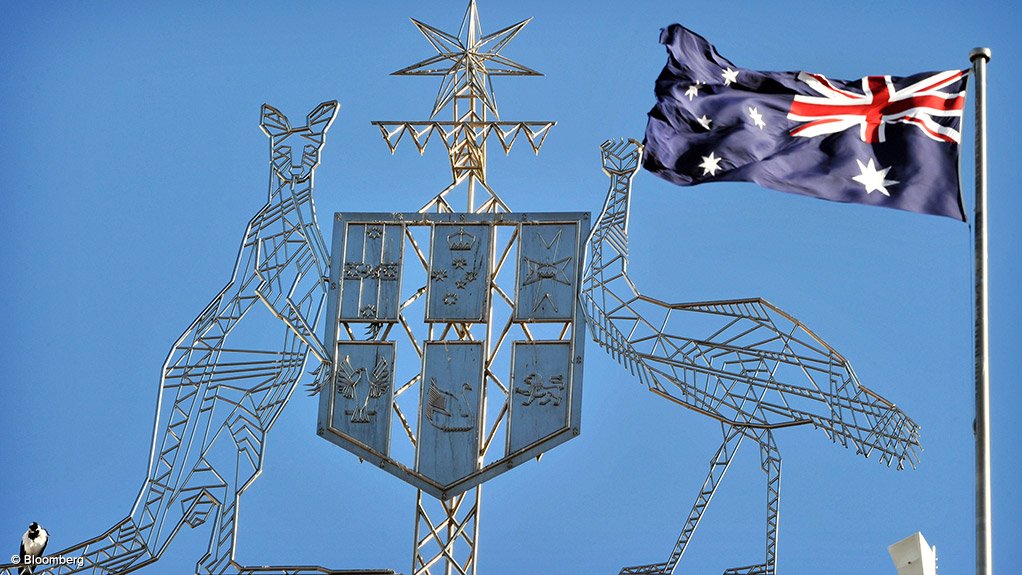King unveils Critical Minerals Strategy
PERTH (miningweekly.com) – The federal government has unveiled its new Critical Minerals Strategy, highlighting six focus areas to help grow Australia’s critical minerals wealth, create jobs, and strengthen global clean energy supply.
Minister for Resources and Northern Australia Madeleine King said the strategy will be an enduring framework to guide future government policy decisions to maximise the national benefits of Australia’s internationally significant critical minerals endowments.
As one of the first policy decisions under the strategy, the government will target A$500-million of new investment into critical minerals projects, via the Northern Australia Infrastructure Facility (NAIF).
The strategy will also establish a process to update the critical minerals list.
King said the strategy makes it clear that Australia can play a crucial role in delivering the processed minerals the world needs for a clean energy future, building on a rich geological endowment and record as a reliable exporter of energy and resources.
“The new Critical Minerals Strategy outlines the enormous opportunity to develop the sector and new downstream industries which will support Australia’s economy and global efforts to lower emissions for decades to come,” she said.
“While the potential is great, so too are the challenges. The strategy makes it clear our natural minerals endowment provides a foot in the door, but we must do more to create Australian jobs and capitalise on this unique opportunity.”
Independent modelling has found increasing exports of critical minerals and energy-transition minerals could create more than 115 000 new jobs and add A$71.2-billion to the gross domestic product (GDP) by 2040.
However, the number of jobs could increase by 262 600, and the increase in GDP strengthen to A$133.5-billion by 2040 if Australia builds downstream refining and processing capability and secures a greater share of trade and investment.
The strategy highlights six focus areas to assist in growing the critical minerals sector, including developing strategically important projects with targeted support, attracting investment and building international partnerships to optimise trade and investment settings for priority technologies, and ensuring First Nations engagement and benefit sharing to strengthen engagement and partnership with First Nations people and communities, and to improve equity and investment opportunities for First Nations interests.
The strategy is also aimed at promoting Australia as a world leader in environmental, social and governance (ESG) standards, unlocking investment in enabling infrastructure and services, and growing a skilled workforce.
The Minerals Council of Australia (MCA) on Tuesday said that the strategy set out a framework to guide the urgent work needed to develop Australia’s critical minerals mining and processing industries and position them as the reliable, affordable and sustainable global supplier of choice.
“While the government’s strategy is a leap forward, providing a coherent framework for integrating already well developed policy areas, it also highlights the significant work that remains to be done to deliver and implement an integrated Australian industry policy framework for mining processing and manufacturing,” said MCA CEO Tania Constable.
“The strategy’s success will depend on regulatory policy settings that encourage and support investment into Australian mining, processing and manufacturing. This includes stable taxation and economic policy frameworks, supported industry-led fit-for-purpose ESG frameworks, workforce skills and capability development, and partnerships with Indigenous communities designed to support positive intergenerational wealth outcomes.”
Constable said that the A$500-million inclusion from the NAIF, in addition to the funding available from the National Reconstruction Fund and the Export Finance Facility, was helpful, however, she added that careful policy consideration was needed to ensure these investments fully leveraged Australia’s critical minerals potential.
“The industry looks forward to working with the government to design and implement the detail of an integrated policy framework and deliver Australia’s potential as the global supplier of choice for the transition to net zero.
“The stark reality of the monumental global net zero emissions transition is becoming clearer.
“Global demand for raw minerals and metals over coming decades is staggering. Based on current mine sizes, by 2035 at least 384 new mines for graphite, lithium, nickel and cobalt alone are needed to provide the processed materials required to meet demand for electric vehicles.
“By 2027, copper demand for manufacturing electric vehicles is expected to increase by 1.7-million tonnes.
“These rapid changes to raw materials supply-demand outlooks are why the list of critical minerals and strategic materials must also be updated regularly and inform policy decisions,” Constable said.
She said, on Tuesday, that the social and economic opportunity this presented for Australia would depend on state and federal governments successfully integrating and implementing policy and regulatory settings to remove impediments to new investment.
“Australia is well placed to be the global supplier of choice for mined and processed critical minerals. Australia’s minerals industry is a world leader and has a global reputation for ESG performance and sustainable practices.
“Supported by the right economic policy settings and international partnerships, Australia’s rich resource endowment enables it to produce and process the full spectrum of critical minerals the world needs for electrification of our cars and transport systems, our phones and laptop computers, our health and defence systems.”
Australia is the world’s largest producer of lithium, the third-largest producer of cobalt and the fourth-largest producer of rare earths. Australia also produces significant amounts of metals such as aluminium, nickel and copper, which combined with critical minerals, are crucial for low-emissions technology such as electric vehicles, batteries, solar panels, and wind turbines.
Meanwhile, the Chamber of Minerals and Energy of Western Australia (CME) said that while the A$500-million of funding to the NAIF was a positive step, there was need for further funding or tax incentives to shift the dial relative to cost settings and incentives in place in other jurisdictions.
“The Strategy also states that bringing online sufficient new supply of the minerals needed to meet increasing demand within an appropriate timeframe represents a significant challenge,” said CME CEO Rebecca Tomkinson.
“CME strongly agrees with the Strategy’s articulation of the challenges we face in bringing new supply of minerals online to meet increasing demand, noting it can take more than 10 years to reach production from early-stage exploration,” she said.
“Alongside strategies and tools to promote Australia’s very high ESG standards, we must work towards reducing this timeline by removing duplication and simplifying processes.”
Tomkinson said that increasing the focus on project facilitation within government would be instrumental in identifying and addressing bottlenecks in real time and translating this insight into process improvements and streamlining reforms where required.
Article Enquiry
Email Article
Save Article
Feedback
To advertise email advertising@creamermedia.co.za or click here
Press Office
Announcements
What's On
Subscribe to improve your user experience...
Option 1 (equivalent of R125 a month):
Receive a weekly copy of Creamer Media's Engineering News & Mining Weekly magazine
(print copy for those in South Africa and e-magazine for those outside of South Africa)
Receive daily email newsletters
Access to full search results
Access archive of magazine back copies
Access to Projects in Progress
Access to ONE Research Report of your choice in PDF format
Option 2 (equivalent of R375 a month):
All benefits from Option 1
PLUS
Access to Creamer Media's Research Channel Africa for ALL Research Reports, in PDF format, on various industrial and mining sectors
including Electricity; Water; Energy Transition; Hydrogen; Roads, Rail and Ports; Coal; Gold; Platinum; Battery Metals; etc.
Already a subscriber?
Forgotten your password?
Receive weekly copy of Creamer Media's Engineering News & Mining Weekly magazine (print copy for those in South Africa and e-magazine for those outside of South Africa)
➕
Recieve daily email newsletters
➕
Access to full search results
➕
Access archive of magazine back copies
➕
Access to Projects in Progress
➕
Access to ONE Research Report of your choice in PDF format
RESEARCH CHANNEL AFRICA
R4500 (equivalent of R375 a month)
SUBSCRIBEAll benefits from Option 1
➕
Access to Creamer Media's Research Channel Africa for ALL Research Reports on various industrial and mining sectors, in PDF format, including on:
Electricity
➕
Water
➕
Energy Transition
➕
Hydrogen
➕
Roads, Rail and Ports
➕
Coal
➕
Gold
➕
Platinum
➕
Battery Metals
➕
etc.
Receive all benefits from Option 1 or Option 2 delivered to numerous people at your company
➕
Multiple User names and Passwords for simultaneous log-ins
➕
Intranet integration access to all in your organisation

















